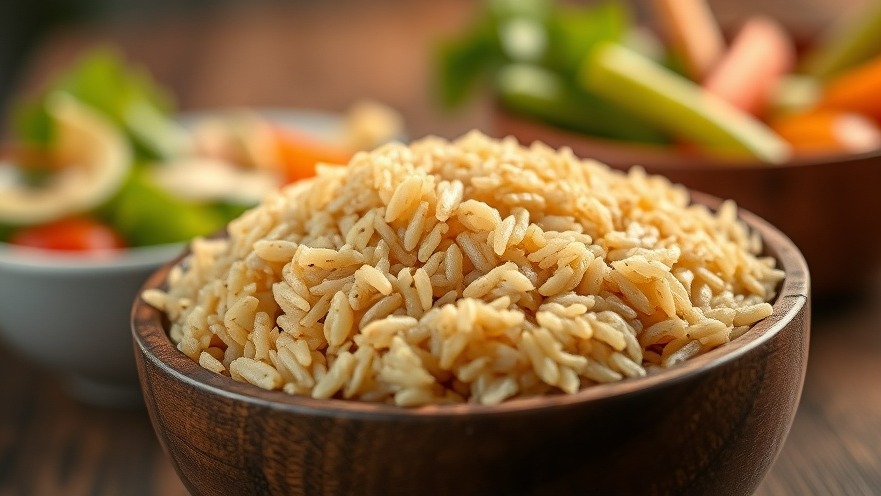
Is Brown Rice Really the Healthier Choice?
As consumers grow increasingly health-conscious, brown rice has often emerged as a superior alternative to white rice, thanks to its reputed benefits and nutrient density. Yet recent studies shed light on a crucial caveat: replacing white rice with brown rice may expose consumers to a significant hidden risk. A study from Michigan State University unveiled that brown rice contains 40% more carcinogenic arsenic than its white counterpart, sparking concerns that may prompt individuals to rethink their dietary choices.
Understanding Arsenic: The Hidden Danger
Arsenic occurs naturally in soil and water, often accumulating in crops like rice. The new study, published in the journal Risk Analysis, analyzed the levels of arsenic found in both brown and white rice. Researchers found that brown rice had 24% more total arsenic and 40% more of the inorganic form, which is deemed carcinogenic. This alarming finding beckons consumers—especially in a landscape where wellness and health narratives dominate the conversation.
Balancing Nutrition with Safety: A Tough Dilemma
Brown rice is packed with nutrients; it’s rich in vitamins, minerals, and fiber. Associated benefits include improved heart health, lower cholesterol levels, and reduced risks of chronic conditions. However, potential arsenic exposure raises the stakes significantly, particularly for young children who are more susceptible due to their size and dietary habits. Finding a balance is crucial, as the health benefits of brown rice may entail overlooked consequences.
The Case for and Against Brown Rice
For health-conscious consumers or concierge medical professionals looking to educate their patients, it's essential to consider both sides of the argument. Brown rice may elevate nutrient intake, but its higher arsenic levels compel experts to advise moderation. In contrast, white rice, while lower in nutrients, may provide a safer eating option due to reduced arsenic concentrations.
Insight from the Experts: What Should Physicians Recommend?
The findings encourage medical professionals to approach dietary recommendations with caution. Integrating a mix of brown and white rice can mitigate potential arsenic exposure while allowing patients to benefit from the unique qualities of both types. This discussion aligns seamlessly with the overarching goal of concierge medicine: to establish patient connections through comprehensive care that respects individual health profiles.
Incorporating Rice into a Healthy Diet
The decision about which type of rice to consume shouldn't merely rest upon health benefits or convenience but should reflect a more holistic perspective of lifestyle, genetics, and personal preferences. Fostering open conversations with patients about their rice choices can support informed decisions that resonate with their health journey.
Looking Forward: Future Trends in Healthy Eating
This research may pave the way for future studies examining other “healthier” foods and the balance between nutrition and safety. As science evolves, so too should our approaches to diet, demanding continuous dialogue around what we consider healthy.
In summary, while brown rice offers undeniable nutritional advantages, it also invites caution due to increased arsenic levels. In the context of patient care, encouraging balanced consumption can help optimize health outcomes while attending to safety. Therefore, the journey toward a healthier diet can and should encompass awareness of both nutritional benefits and potential risks.
To ensure a well-rounded approach to nutrition, consider integrating educational resources on the topic of rice and arsenic into your practice. This will empower your patients to make informed choices while growing your standing as a thoughtful and comprehensive concierge medical provider.
 Add Row
Add Row  Add
Add 






Write A Comment